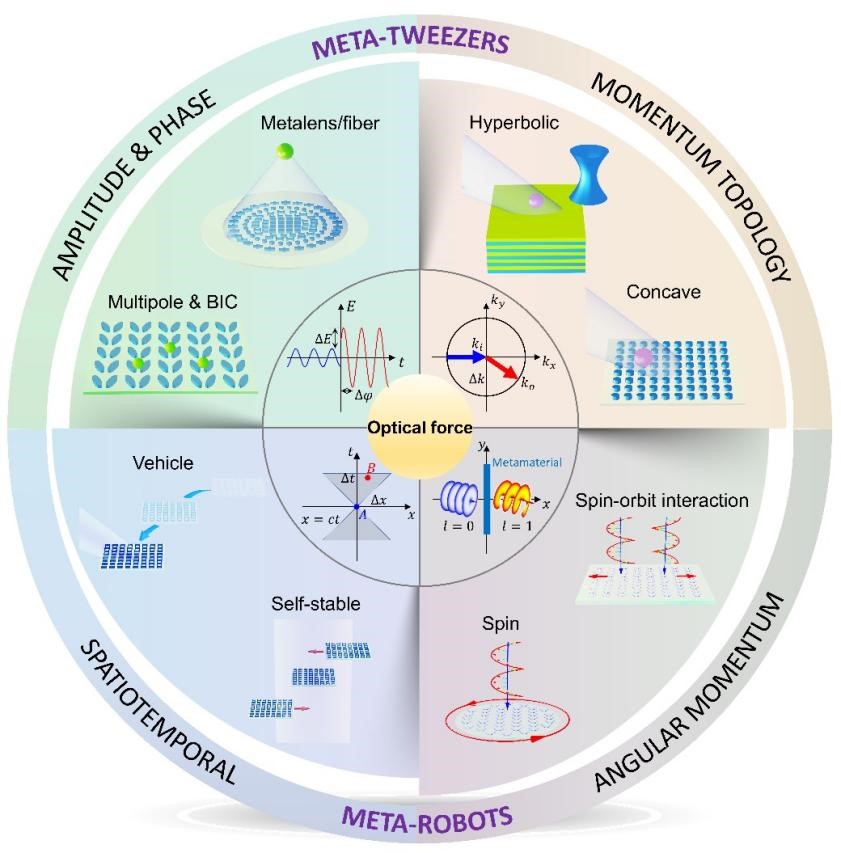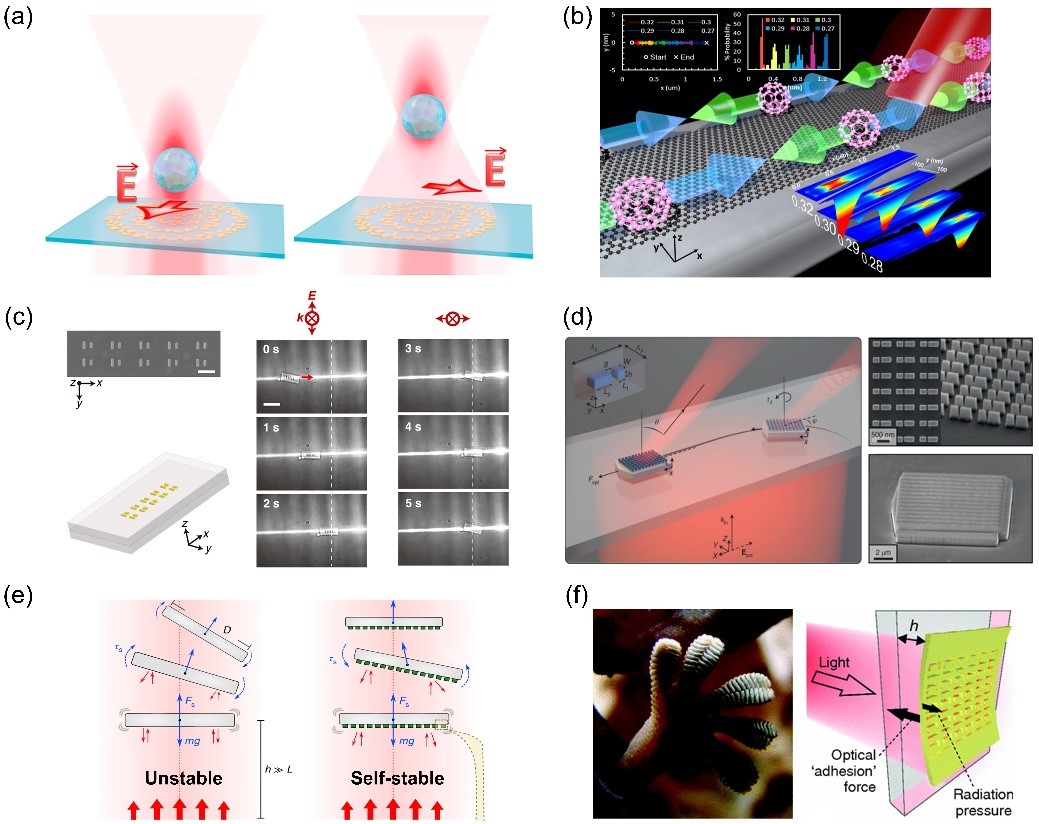On August 17, SHI Yuzhi, a distinguished researcher of Professor WANG Zhanshan and Professor CHENG Xinbin's team from the School of Physics Science and Engineering of Tongji University, published an online paper entitled "Optical manipulation with metamaterial structures" in Applied Physics Reviews 9, which was selected as a featured article of the issue and included in AIP Advances: Materials Science Collection. This paper reviews the physical mechanism in optical manipulation of metamaterials for the first time, summarizes the application of typical optical manipulation of metamaterials, and distinguishes two typical configurations of optical manipulation technology of metamaterials: "meta-tweezers" and "meta-robots", as shown in Figure 1.

Figure 1: The typical configurations of optical tweezers for metamaterials are categorized into "meta tweezers" and "meta robots". This paper reviews the typical principles and applications of optical tweezers based on metamaterials from four perspectives: amplitude and phase, momentum topology, space-time and angular momentum.
Optical tweezers technology uses the momentum exchange between light and particles to apply light force on particles and manipulate them. Since it was invented by Professor Arthur Ashkin (Nobel Laureate) in the 1980s, it has been widely used in physics, biomedicine and other fields. Traditional optical tweezers rely mostly on refractive optics or near-field light generated by classical nanostructures. It usually requires large and complex optical systems to regulate the amplitude, phase, wave vector and angular momentum of light, which is not conducive to the miniaturization and cost control of optical tweezers systems. Metamaterials can provide electromagnetic response at sub-wavelength scale, and can effectively regulate and control parameters of light accurately. Therefore, they can bring new opportunities for optical tweezers manipulation. In this paper, the author first reviews the basic principles of manipulation in optical tweezers and optical tweezers systems from the perspective of the basic theory of optical tweezers and metamaterials, and then introduces several typical manipulation cases of "optical tweezers", including capture, transmission, sorting, and strange optical forces, including traction and lateral forces.
In particular, with the continuous progress of nano optics and processing technology in recent years, "meta-robots" have received widespread attention. They use the electromagnetic response under the excitation of light to generate optical forces that acts directly on the microstructure. By controlling different polarization states or polarization directions, the magnitude and direction of forces and moments can be adjusted to realize the movement of one-dimensional, two-dimensional and even three-dimensional superstructures. In the future, multi-degree of free light driven nanorobots can be designed for wide application in biomedical fields such as drug delivery and mixing, and single-cell targeted therapy.

Fig. 2 Dynamic regulation of optical forces in optical tweezers of metamaterials: a) Different polarization directions of light control the capture position of particles; b) Dynamic regulation of optical potential for particle separation; c) Linear motion of plasma "meta-robots"; d) Under the action of linearly polarized light and circularly polarized light, the "meta-robots" move in a straight line and rotate in a circular direction to realize two-dimensional motion; e) Self-stabilization of "meta-robots" in Gaussian beam; f) The "meta-robots" can generate optical adhesion or repulsion force with the substrate.
The paper also explores the future development of optical tweezers for metamaterials, such as meta-robots with more dimensions and functions, multi-functional manipulation assisted by holographic technology of metamaterials, and more optical tweezers manipulation applications brought by the control of spin and orbital angular momentum by metamaterial structures.
SHI Yuzhi, a distinguished researcher, is the first author of the paper. SONG Qinghua, assistant professor of Shenzhen Graduate School of Tsinghua University, YU Yefeng, Professor of Nanjing University of Technology, ZHU Weiming, Professor of University of Electronic Science and Technology, Yuri kivshar, academician of Australian National University, and LIU Aiqun, academician of Nanyang Technological University, Singapore are the co corresponding authors of the paper. This research was supported by Tongji University's Start-Up Research Fund.
Paper link:https://aip.scitation.org/doi/10.1063/5.0091280
Link to AIP Scilight:https://aip.scitation.org/doi/10.1063/10.0013730